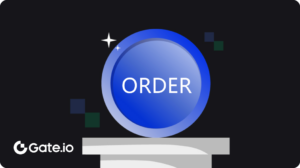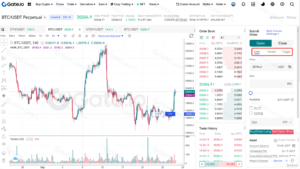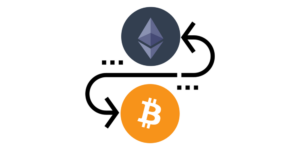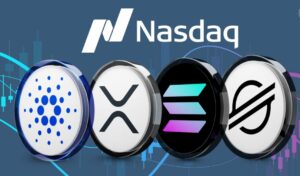
Regardless of whether you are a beginner or a seasoned investor, understanding the nuances of Gate.io orders—including market orders, limit orders, stop-loss orders, and different contract order types—can provide a competitive advantage in the marketplace. This guide aims to offer a comprehensive examination of these Gate.io order types, assisting traders in formulating a robust strategy aligned with their trading objectives and risk appetite.
Introduction to Gate.io Orders
Gate.io is a globally recognized cryptocurrency exchange offering diverse trading options including spot, margin, and contract trading. Spot trading enables immediate buying or selling at current market prices; margin trading lets users borrow funds to potentially amplify gains (with higher risks); and contract trading allows speculation on future price movements without owning the underlying assets. To optimize trading on Gate.io, it’s essential to understand the variety of order types available. These orders—such as stop-loss orders—help manage risk by executing trades at predetermined prices, and they also allow traders to automate their strategies to efficiently capitalize on market fluctuations without constant monitoring. Mastering these tools is key to navigating the complexities of the cryptocurrency market and enhancing overall trading performance.

Market Orders
Market orders represent one of the simplest and most commonly utilized forms of trading instructions within the realm of cryptocurrency. These Gate.io orders enable traders to purchase or sell digital assets immediately at the prevailing market price, which is the current price at which the asset is being traded. This characteristic makes market orders particularly appealing for those who prioritize quick execution of their trades.
When a trader places a market order, they are essentially instructing the exchange to execute the transaction as soon as possible, without waiting for a specific price point to be reached. This immediacy can be crucial in the fast-paced world of cryptocurrencies, where prices can fluctuate dramatically within short time frames. As a result, market orders are often favored by individuals who want to capitalize on sudden market movements or take advantage of favorable conditions without delay.

How Market Orders Work in Practice:
Let’s delve into the essential features of Gate.io orders, specifically market orders on Gate.io, a popular cryptocurrency exchange:
- Instant Execution (When Liquidity Permits):The primary advantage of Gate.io orders using market execution is their speed. Gate.io strives to execute these orders instantaneously. However, this speed is contingent upon sufficient liquidity. Liquidity refers to the availability of enough buy and sell orders in the order book to match your market order. In highly liquid markets, large Gate.io orders can be filled almost instantly. However, in less liquid markets, especially for smaller or less popular cryptocurrencies, there might be a slight delay, or your order might be partially filled.
- Best Available Price (Not Necessarily the Displayed Price):A market order within Gate.io orders is filled at the best available price at the moment of execution. This is a crucial point. The price you see displayed on the trading interface when you’re about to place the order is a snapshot of the market at that instant. The market is constantly in flux, and by the time your order reaches the exchange’s matching engine, the price might have moved slightly. Gate.io’s system will match your buy order with the lowest available ask price (the price someone is willing to sell at) and your sell order with the highest available bid price (the price someone is willing to buy at).
- No Price Guarantee: The Risk of Slippage: Because market orders within Gate.io orders prioritize speed, they do not guarantee a specific price. This is the inherent trade-off. The difference between the price you see when placing the order and the actual price at which it’s executed is called slippage. Slippage is more pronounced during periods of high market volatility or low liquidity. Imagine a sudden surge in buying activity. The ask prices will rapidly increase, and your market buy order might be filled at a price significantly higher than what you initially saw. Conversely, during a sudden sell-off, your market sell order might be filled at a lower price than expected.
- Order Book Interaction :Market orders within Gate.io orders “consume” liquidity from the order book. When you place a market buy order, it matches and fills the lowest outstanding sell orders (the asks) until your order is filled. Similarly, a market sell order matches and fills the highest outstanding buy orders (the bids). This interaction is what drives price discovery and market dynamics.
While market orders on Gate.io offer the advantage of quick execution, traders must be mindful of the associated risks, such as potential slippage and the influence of market liquidity on their transactions. Understanding these factors is essential for making informed trading decisions in the fast-paced world of cryptocurrency trading.
Key Characteristics of Market Orders:
In the fast-paced world of financial trading, executing the right type of order can make all the difference in achieving successful outcomes. Among the various types of Gate.io orders, market orders play a crucial role. Understanding the key characteristics of market orders is essential for traders, as it enables them to make quick and informed decisions that align with their trading strategy and market conditions.
- Immediate Execution (Contingent on Liquidity): The primary allure of market orders is their speed. They are designed to be executed instantly. However, this speed is dependent on sufficient liquidity in the market. If there aren’t enough sell orders (asks) available at the current price levels to match your buy order (or vice versa), your order might be partially filled or experience some delay.
- Best Available Price (Not Necessarily the Displayed Price): Market orders execute at the best available price at the exact moment of execution. It’s critical to understand that the price you see on the trading interface when you’re about to place the order is a snapshot of the market at that instant. The market is constantly moving, and the price can change by the time your order reaches the exchange’s matching engine.
- No Price Guarantee: The Inevitability of Slippage: Because market orders prioritize speed, they do not guarantee a specific price. This is the inherent trade-off. The difference between the price you see when placing the order and the actual price at which it’s executed is called slippage. Slippage is more pronounced during periods of high market volatility or low liquidity.
The Two Sides of the Coin: Advantages and Disadvantages
When assessing any situation, decision, or concept, it is crucial to examine both the positive and negative aspects involved. By taking into account both sides of the argument, we can achieve a comprehensive understanding of its implications, advantages, and possible downsides. This dual perspective highlights the importance of recognizing the two facets of any issue: benefits and drawbacks. Each side provides valuable insights that can assist us in making informed choices and developing well-rounded opinions.
Advantages of Market Orders:
- Speed and Decisiveness: One of the primary strengths of market orders within Gate.io orders lies in their ability to execute trades swiftly. In scenarios where timing is critical, such as in the rapidly evolving cryptocurrency market, market orders enable traders to seize fleeting opportunities or quickly exit positions in response to sudden market fluctuations. The immediacy offered by market orders can be a significant advantage for those looking to capitalize on quick price movements.
- Simplicity and Ease of Use:Market orders within Gate.io orders are among the simplest types of trading orders available. Their straightforward nature means that even individuals who are new to trading can easily understand how to place them. This accessibility makes market orders an attractive option for novice traders who may not yet be familiar with more complex order types or trading strategies.
Disadvantages of Market Orders:
- Slippage:While speed is a notable benefit of market orders within Gate.io orders, it also comes with a considerable drawback known as slippage. Slippage occurs when there is a difference between the expected price of a trade and the actual price at which the trade is executed. Since market orders do not allow traders to specify a price, they are vulnerable to the prevailing market conditions at the time of execution. In highly volatile markets, this can lead to substantial slippage, resulting in unexpected costs or diminished profits for the trader.
- Lack of Price Control:Another significant disadvantage of market orders within Gate.io orders is the loss of control over the execution price. When placing a market order, traders must accept whatever price is available at that moment, which can be problematic for those who are particularly sensitive to price changes or who are trading in unstable market environments. This lack of price control can lead to unfavorable outcomes, especially if the market experiences rapid fluctuations just before the order is filled.
While market orders offer distinct advantages such as speed and ease of use, they also come with inherent risks like slippage and a lack of price control. Understanding both the pros and cons is essential for traders to make informed decisions that align with their trading strategies and risk tolerance.
Who Should Use Market Orders?
Market orders on Gate.io allow traders to quickly buy or sell at current market prices, making them ideal for reacting to rapid market changes and significant price fluctuations. Conversely, limit orders provide more control by letting traders specify the exact price at which they want to execute a trade, ensuring they avoid overpaying or selling too low. Understanding these order types enables traders to choose strategies that best match their risk tolerance and trading goals.
Limit Orders
Market orders are particularly advantageous for traders who place a high value on speed and efficiency when entering or exiting their trading positions. These types of orders allow traders to buy or sell assets at the current market price, which means that they can quickly react to rapid changes in the market. If you find yourself anticipating significant fluctuations in asset prices and wish to take advantage of immediate market movements, then utilizing market orders could be the most effective strategy for you.
Conversely, if your trading style leans more towards exercising greater control over the specific prices at which you choose to buy or sell your assets, then limit orders within Gate.io orders might be a more appropriate choice. Limit orders allow you to set a specific price at which you are willing to execute a trade, ensuring that you do not end up buying at a higher price or selling at a lower price than you intended. This approach can provide a sense of security, especially in volatile markets where prices can change rapidly.
Ultimately, having a solid understanding of when to implement market orders versus limit orders is crucial for achieving success in trading. By developing a keen awareness of market dynamics, trends, and the factors that influence price movements, you will be better equipped to make informed decisions about which type of order to use in various situations. This knowledge can significantly enhance your trading strategy and help you navigate the complexities of the financial markets more effectively.

Benefits of Limit Orders
- Price Control: Limit orders within Gate.io orders provide traders with the ability to specify the exact price at which they wish to buy or sell an asset. This feature is particularly advantageous in markets characterized by high volatility, where prices can change dramatically within a short period. By using limit orders, traders can avoid the unpredictability associated with market orders, which execute at the next available price, potentially leading to unexpected costs. This level of control allows traders to make more informed decisions and helps them manage their investment strategies more effectively.
- No Slippage: Unlike market orders, which are executed at the best available price (which may differ from the expected price), limit orders within Gate.io orders guarantee that your trade will only be executed at your specified price or better. This eliminates the risk of slippage.
- Strategic Trading: For traders who employ technical analysis, support and resistance levels, or other systematic trading strategies, limit orders are exceptionally beneficial. They enable traders to plan their entry and exit points ahead of time, ensuring that their trades are executed in accordance with their broader trading strategy. This foresight allows for more disciplined trading practices, as traders can set their parameters without being swayed by emotional reactions to market fluctuations. By aligning trades with their strategic goals, traders can enhance their chances of achieving favorable outcomes.
- Time Efficiency: Another advantage of limit orders is the time-saving aspect they offer. Once a limit order is placed, there is no need for constant monitoring of the market. The order will automatically trigger when the market reaches the specified target price, allowing traders to focus on other important tasks or activities without the stress of watching price movements continuously. This efficiency not only reduces the mental burden on traders but also allows them to engage in other pursuits, whether personal or professional, while still participating in the market.
- Cost Savings: Additionally, many trading platforms, such as Gate.io, often charge lower fees for limit orders compared to market orders. This is because limit orders contribute liquidity to the market, which is beneficial for overall market health. By placing limit orders, traders can take advantage of these reduced fees, ultimately saving money on their transactions. This cost-effective approach can significantly impact a trader’s profitability over time, making limit orders an attractive option for both novice and experienced traders alike.
Limitations of Limit Orders
Limit orders are a popular tool among traders due to their unique benefits, but they also come with certain disadvantages that one should consider before using them.
- No Guarantee of Execution: One of the primary drawbacks of limit orders within Gate.io orders is that there is no assurance that your order will be executed. If the market price does not reach the specific level you have set, your order remains unfilled.
- Partial Fills:Another issue that can arise with limit orders is the possibility of partial fills. This occurs when only a fraction of your total order is executed due to insufficient liquidity at your specified price. For instance, if you place an order for 100 shares at a certain price but only 50 shares are available at that price, only those 50 will be filled while the remaining 50 will remain open in the order book. This incomplete execution can lead to complications in managing your overall trading strategy, as you may need to decide whether to adjust or cancel the unfilled portion of your order within Gate.io orders.
- Missed Opportunities:In markets characterized by high volatility, prices can change rapidly, often bypassing your target price without triggering your limit order within Gate.io orders.
- Requires Patience:Lastly, limit orders necessitate a degree of patience that may not suit all traders. They are not designed for those who require immediate trade execution, as they depend on the market reaching your predetermined price before any action is taken. This waiting game can be challenging for traders who prefer to act quickly based on real-time market conditions. Therefore, utilizing limit orders effectively requires a mindset geared towards long-term strategy rather than instant gratification.
When to Use Limit Orders
Limit orders are particularly advantageous for traders who have a clear strategy and preferred price levels. If you are conducting thorough analysis and want to enter or exit positions based on specific technical indicators or support/resistance levels, Gate.io orders in the form of limit orders can be highly effective.
Moreover, if you do not need to monitor the market continuously, placing Gate.io orders like limit orders can save time while still allowing you to stay engaged with your trading strategy. Overall, Gate.io orders empower traders to execute their plans with greater control, aligning trading actions with individual risk tolerance and market analysis.
Spot Trading Order Types
Spot trading involves the immediate exchange of financial instruments, with transactions typically settling within two business days. Unlike futures or derivatives trading, where delivery occurs at a future date, spot trading allows for real-time asset exchange based on current market prices. On Gate.io, traders can use various orders—such as market orders, limit orders, and stop-limit orders—to quickly capitalize on market movements. This immediacy is especially useful in the volatile cryptocurrency markets, but it also requires a solid understanding of market dynamics and strategic order selection to align with investment goals.

Common Spot Trading Order Types
In addition to the commonly known market and limit orders, there exists a variety of other Gate.io orders in spot trading that cater to different trading strategies and approaches. Among these are grid trading orders, time orders, and tracking orders, each designed to enhance trading efficiency and effectiveness.
Grid Trading Orders
Grid trading involves placing multiple limit orders at fixed intervals above and below a set price, capitalizing on market fluctuations. This strategy enables traders on Gate.io to profit in both rising and falling markets by automating buy and sell orders within a defined range. Its key advantage is automation, which allows for a hands-off approach while still capturing price movements. However, successful grid trading requires careful planning to ensure the chosen price intervals align with current market trends, avoiding unnecessary risks or missed opportunities.
Time Orders
Time orders allow traders to set a specific duration during which an order remains active. If the order isn’t executed within the set timeframe, it is automatically canceled, which helps mitigate risk in volatile markets. This feature provides flexibility and control, reducing the need for constant monitoring and minimizing exposure to sudden market shifts.
Tracking Orders
Tracking orders, or trailing stop orders, dynamically adjust the stop-loss level as the market price moves. This allows traders to protect profits by automatically raising their stop-loss when the price increases, while still capturing further gains. As one of several order types available on Gate.io—including grid and time orders—tracking orders provide a flexible tool for managing risk and optimizing trading strategies in a dynamic market environment.
Contract Order Types
Spot trading provides a straightforward approach for traders to engage in the buying and selling of assets directly. This method allows individuals to execute transactions in real-time, acquiring ownership of the asset immediately upon completion of the trade. In contrast, Gate.io orders in contract trading introduce traders to the more complex realm of derivatives, which can significantly enhance their trading strategies by offering greater flexibility and advanced options.
Derivatives are financial instruments whose value is derived from an underlying asset, such as stocks, commodities, or currencies. By utilizing contract orders, traders can speculate on the future price movements of these assets without actually possessing them. This capability opens up a variety of opportunities for traders, allowing them to hedge against potential losses or to leverage their positions in order to maximize returns. For instance, if a trader anticipates that the price of a commodity will rise, they can enter into a derivative contract to profit from that increase without needing to purchase the physical commodity itself.
However, engaging in derivative trading is not without its challenges. It necessitates a comprehensive understanding of various market dynamics, including how different contracts function, the specific terms and conditions associated with each contract, and the broader economic factors that can influence price fluctuations. Additionally, effective risk management strategies are crucial when trading derivatives, as the potential for both significant gains and substantial losses exists. Traders must be well-versed in assessing their risk tolerance and implementing measures to protect their investments while navigating this intricate landscape.

Exploring Contract Orders
Gate.io contract orders are key to derivative trading, enabling speculation and hedging without owning the underlying assets like Bitcoin or Ethereum. These orders involve complex details such as contract specifications, expiration dates, and margin requirements. Options contracts, for example, grant the right (but not the obligation) to buy or sell at a predetermined price within a specific period. While margin trading allows control of larger positions, it also amplifies potential losses if the market moves unfavorably. Overall, success with these instruments demands a deep understanding of market dynamics, including volatility, interest rates, and sentiment, coupled with careful strategic planning.
Futures Contracts
Futures contracts are one of the most popular types of Gate.io orders in derivatives trading. They obligate the buyer to purchase, and the seller to sell, an asset at a predetermined price and date in the future. This forward-looking nature makes futures contracts an excellent tool for both hedging and speculation.
One of the key features of futures trading is leverage. By using leverage, traders can control a larger position with a smaller amount of capital. While this amplifies potential profits, it also increases the risk of significant losses. Therefore, risk management is critical when trading futures. Tools like stop-loss orders and take-profit orders can help mitigate these risks.
Options Contracts
Options contracts grant traders the right (but not the obligation) to buy or sell an asset at a predetermined price within a specified period. This flexibility empowers traders to design intricate strategies based on their expectations of market movements.
Options can be classified as call options (the right to buy) or put options (the right to sell), providing traders with versatile hedging and speculative opportunities. Understanding the nuances of Gate.io orders in options trading, including implied volatility and Greeks, is crucial for traders looking to navigate this complex market successfully.
Advantages and Disadvantages of Contract Order Types
Choosing the right type of Gate.io orders is critical for trading success. Each order type comes with its own benefits and challenges that can significantly affect trade execution, risk management, and overall strategy. By understanding these differences, traders can navigate market complexities more effectively, manage risks appropriately, and ultimately maximize their investment returns.
Advantages of Contract Order Types
- Leverage: Gate.io orders, especially futures, offer leverage, allowing traders to control large positions with a relatively small amount of capital. This can magnify potential profits.
- Hedging: Derivatives like futures and options can be used to hedge against price fluctuations in the underlying asset. This is particularly valuable for businesses seeking to mitigate risks.
- Speculation: Contract orders enable traders to speculate on the price movements of assets without owning them. This opens up opportunities to profit from both rising and falling markets.
- Flexibility: Options contracts offer a high degree of flexibility with various strategies. Traders can tailor their positions based on their market outlook and risk tolerance.
- Accessibility: Gate.io orders provide access to a wide range of markets, including commodities, currencies, and indices, that might be otherwise difficult to trade directly.
Disadvantages of Contract Order Types
- Risk: Leverage can magnify losses as well as profits. Gate.io orders in derivatives trading involve significant risk, and it’s possible to lose more than the initial investment.
- Complexity: Understanding the intricacies of Gate.io orders in contract specifications, margin requirements, and the various factors that influence pricing (like volatility for options) can be challenging.
- Time Decay: Options contracts have an expiration date. The value of an option can erode over time, a phenomenon known as time decay, regardless of the direction of the underlying asset’s price.
- Margin Calls: With leveraged positions, traders may face margin calls, requiring them to deposit additional funds to cover potential losses. Failure to meet margin calls can lead to liquidation of positions.
- Counterparty Risk: In some Gate.io orders related to derivatives transactions, there’s a risk that the other party involved in the contract may default on their obligations.
Conclusion
Understanding the various types of Gate.io orders is fundamental for anyone looking to succeed in the dynamic world of cryptocurrency trading. By familiarizing yourself with market orders, limit orders, spot trading orders, and contract order types, you can tailor your trading strategies to your specific goals and risk tolerance.
As markets continue to evolve, staying informed about the intricacies of Gate.io orders can empower you to make strategic decisions that align with your financial aspirations. Whether you prioritize speed, precision, or flexibility, the right combination of trading orders can optimize your trading experience and enhance your profitability in the fast-paced cryptocurrency landscape.























